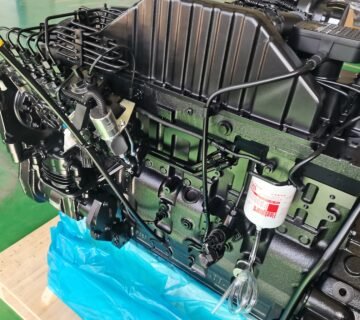DEF (Diesel Exhaust Fluid) and Its Role in Cummins Aftertreatment Systems
In the era of stringent emissions regulations, Diesel Exhaust Fluid (DEF) has become a cornerstone of modern diesel engine technology. For Cummins, a global leader in power solutions, DEF is integral to its aftertreatment systems, enabling compliance with global emissions standards while maintaining engine performance. This article explores DEF’s chemistry, its role in Cummins’ Selective Catalytic Reduction (SCR) systems, and best practices for maximizing efficiency and longevity.

What Is DEF and How Does It Work?
DEF is a non-toxic, non-flammable solution composed of 32.5% high-purity urea and 67.5% deionized water. When injected into the exhaust stream, DEF undergoes a chemical reaction in Cummins’ SCR systems, converting harmful nitrogen oxides (NOx) into harmless nitrogen gas (N₂) and water vapor (H₂O).
The process begins in the decomposition reactor, where DEF is atomized into a fine mist. Heat from the exhaust transforms the urea into ammonia (NH₃), which then reacts with NOx over the SCR catalyst. This reduces NOx emissions by up to 96%, ensuring compliance with standards like EPA Tier 4 Final and Euro VI.
Cummins’ SCR System: Precision and Reliability
Cummins’ aftertreatment systems are engineered around four core components:
- Diesel Oxidation Catalyst (DOC): Oxidizes hydrocarbons and carbon monoxide, preparing the exhaust for downstream treatment.
- Diesel Particulate Filter (DPF): Captures over 90% of particulate matter (PM), which is later oxidized during regeneration.
- Decomposition Reactor: Converts DEF into ammonia for NOx reduction.
- SCR Catalyst: Facilitates the final chemical reaction to neutralize NOx.
Key to this system is Cummins’ electronic control module (ECM), which precisely monitors exhaust temperature, pressure, and NOx levels. The ECM adjusts DEF dosing rates in real time, optimizing emissions control without compromising fuel efficiency.
Advantages of DEF in Cummins Engines
- Lower Emissions, Higher Efficiency
DEF enables Cummins engines to meet strict NOx limits while improving fuel economy. SCR systems reduce the need for exhaust gas recirculation (EGR), allowing engines to operate at higher combustion efficiency.
- Cold-Weather Performance
DEF’s 32.5% urea concentration ensures reliable operation in temperatures as low as 12°F (-11°C). The solution freezes and thaws uniformly, preventing crystallization in storage tanks.
- Reduced Maintenance
Cummins’ SCR systems are designed for minimal upkeep. Unlike DPFs, which require periodic regeneration, SCR components are virtually maintenance-free, with only occasional filter replacements.
Challenges and Best Practices
While DEF is critical for emissions compliance, improper use can lead to operational issues:
- DEF Consumption Rates
DEF usage typically ranges from 3% to 5% of fuel consumption. However, factors like aggressive driving, frequent idling, or high engine loads can increase DEF demand. For instance, Cummins’ post-2015 engines saw DEF consumption rise to 4–5% to meet stricter NOx limits, though this was offset by improved fuel economy.
- Quality Matters
Low-quality DEF can clog injectors or damage catalysts. Cummins recommends using API- or ISO 22241-certified DEF to ensure purity and avoid contaminants.
- System Maintenance
– Visual Inspections: Check for leaks, corrosion, or damaged wiring in DEF lines and electrical connections.
– Forced DPF Regeneration: Perform monthly parked regenerations to burn off excess soot and maintain system efficiency.
– Storage Solutions: Store DEF in cool, dry conditions and avoid prolonged exposure to sunlight to prevent degradation.
The Future of DEF and Cummins’ Innovations
Cummins continues to refine its aftertreatment technology through platforms like the Modular Aftertreatment System, which combines DPF and SCR components into a compact, flexible design. This system meets Tier 4 Final and EPA 2013 standards while reducing installation complexity.
Looking ahead, Cummins is exploring ternary fuel blends (e.g., biodiesel, renewable diesel, and DEF) to further reduce lifecycle emissions. Advances in ultra-low NOx SCR catalysts and predictive analytics for DEF dosing are also underway, promising even greater efficiency.

Conclusion
DEF is not just a regulatory requirement—it’s a strategic enabler of cleaner, more efficient diesel engines. Cummins’ aftertreatment systems leverage DEF’s unique chemistry to deliver near-zero emissions without sacrificing power or reliability. By adhering to maintenance best practices and using high-quality DEF, fleets can achieve sustainability goals while minimizing downtime.
As emissions standards evolve, Cummins remains at the forefront, proving that environmental responsibility and industrial productivity can coexist.





No comment